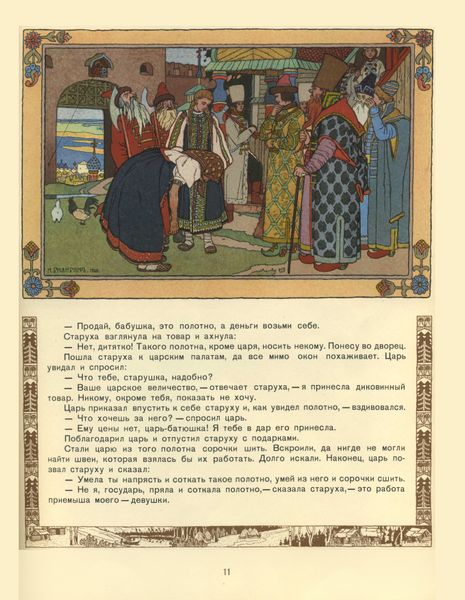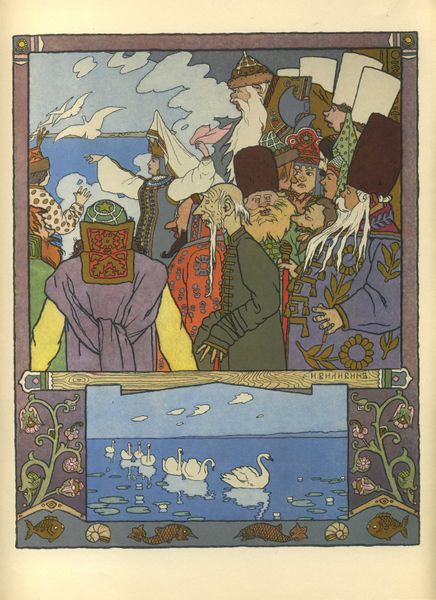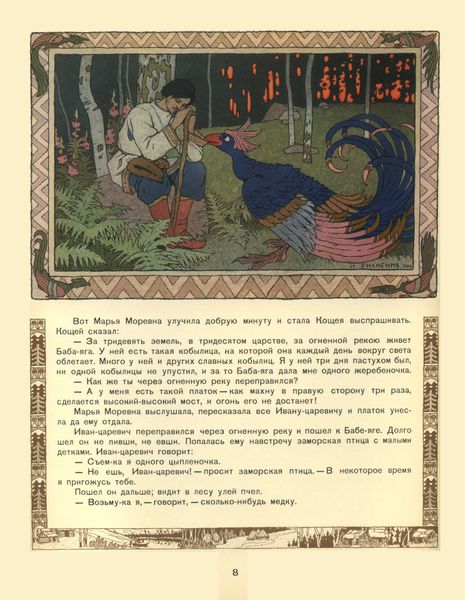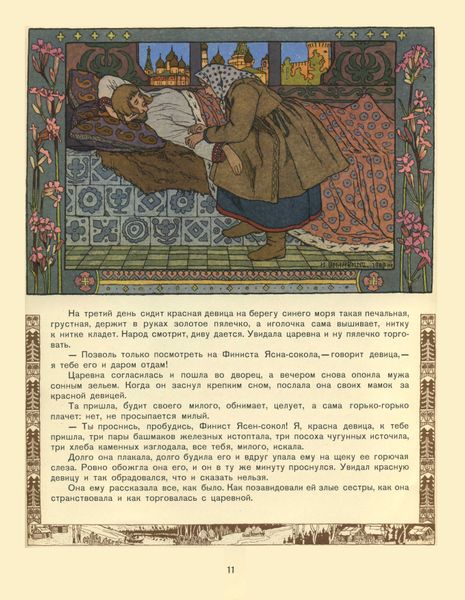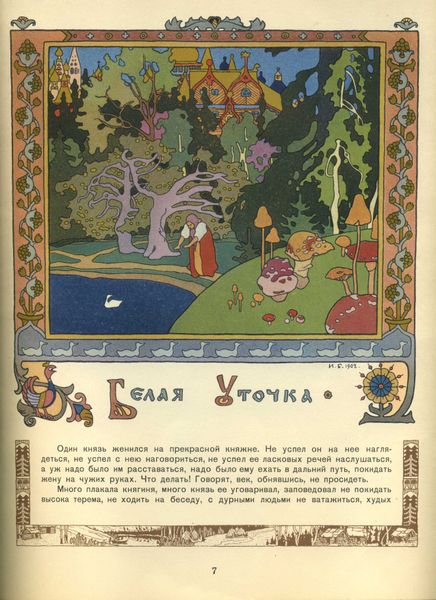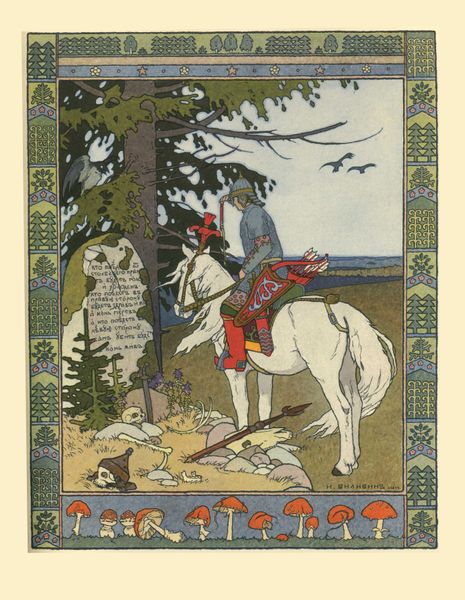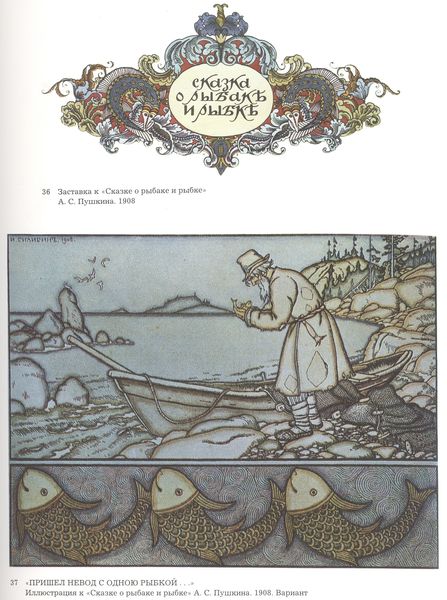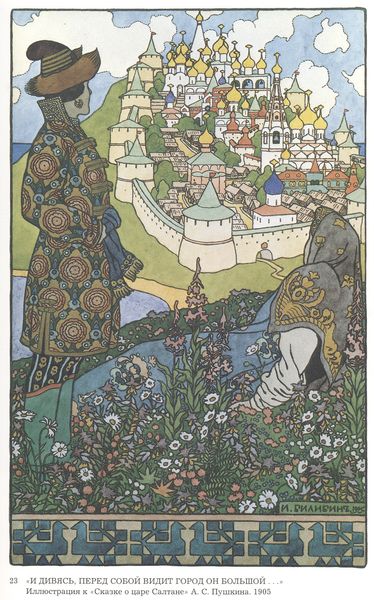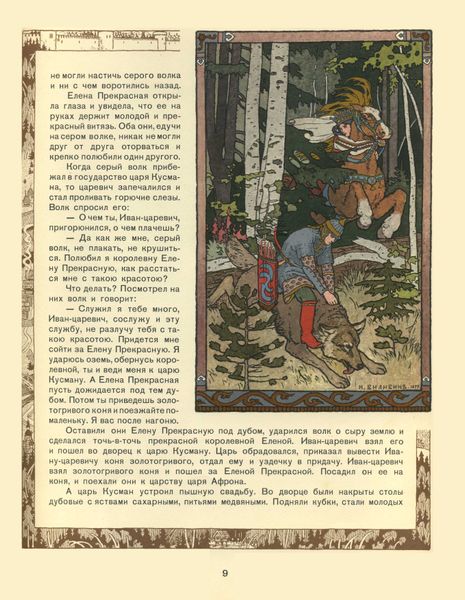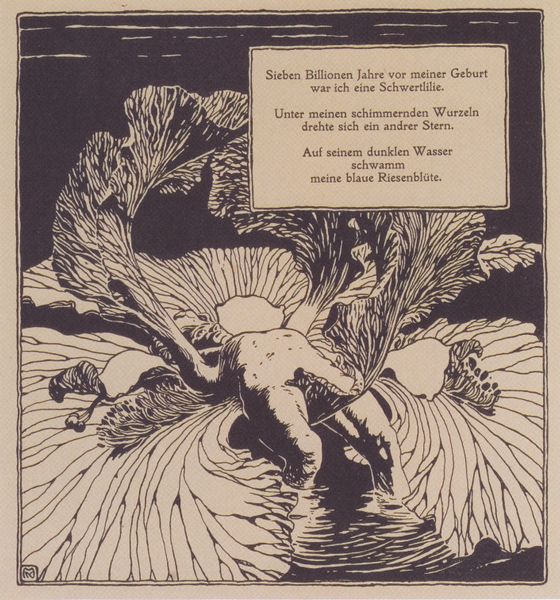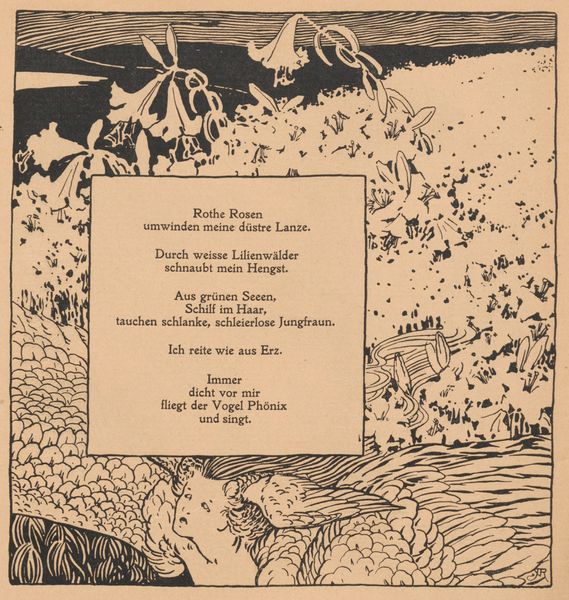
watercolor
#
fairy-painting
#
byzantine-art
#
narrative-art
#
landscape
#
fantasy-art
#
watercolor
#
mythology
#
watercolour illustration
Copyright: Public domain
Editor: This is an illustration for the fairy tale "Vasilisa the Beautiful" by Ivan Bilibin. The use of watercolor gives it a dreamy quality, but there's also something quite solemn about the lone figure by the sea. What stands out to you? Curator: I am immediately drawn to how Bilibin weaves together elements of the familiar and the fantastical, creating a powerful sense of place and symbolism. The fish motif framing the image immediately invokes a sense of cultural memory for viewers familiar with Russian folklore. Notice, too, the posture of the main figure—pensive, almost burdened. Editor: Burdened, yes, I see that now. The slightly downcast head... Is that figure the hero of the story, perhaps? Curator: Most likely, Ivan Tsarevich, embarking on a quest. The landscape isn't merely a backdrop; it's a reflection of his internal state. The sea, often a symbol of the unconscious, stretches out before him, full of both promise and peril. Even the presence of that strange fish evokes primordial forces at play. Editor: It’s almost like he's facing not just a physical journey but also an internal one, wrestling with something deeper. It’s more profound than I initially thought. Curator: Precisely. Bilibin's genius lies in his ability to tap into archetypal symbols, these potent images that resonate across cultures and generations. This illustration serves as a reminder of the enduring power of folklore to explore our own journeys and inner landscapes. Editor: So, it's not just about a fairy tale, but about universal themes of quest, internal conflict, and the weight of our cultural inheritance. Curator: Indeed. The artist makes folklore a visual repository, a powerful reflection of cultural and personal memory. The artist understood how images are potent tools.
Comments
No comments
Be the first to comment and join the conversation on the ultimate creative platform.

